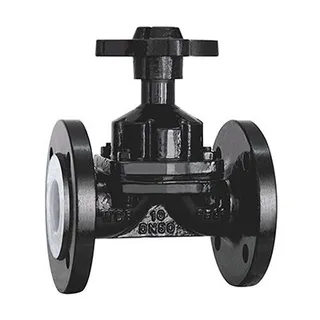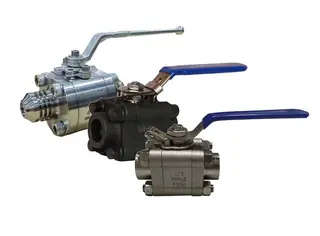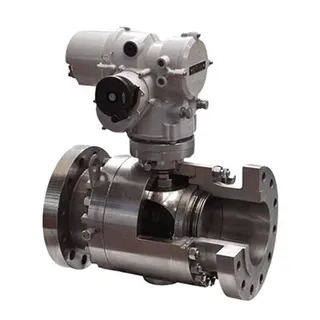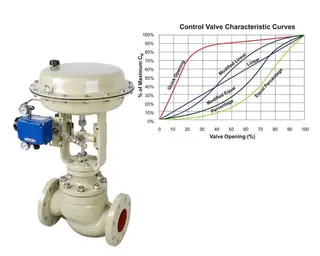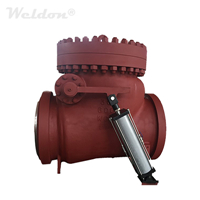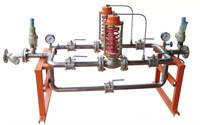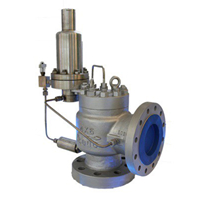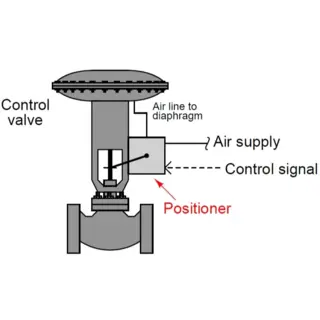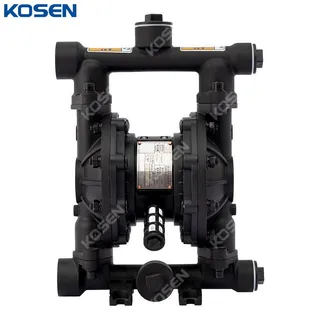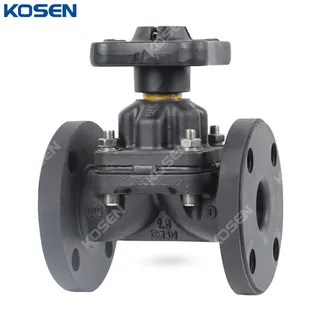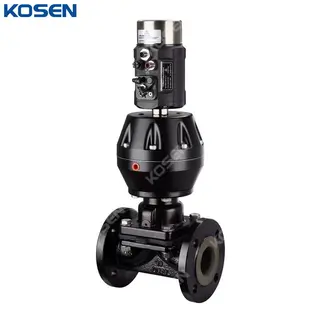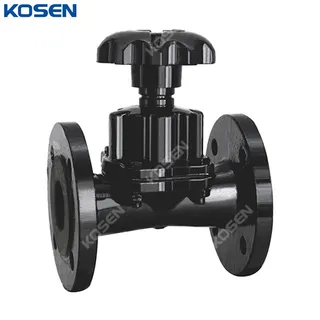Working Principle of Diaphragm Valve
A diaphragm valve is a type of stop valve that utilizes a diaphragm to control fluid flow. The diaphragm, which serves as the opening and closing mechanism, blocks the flow channel and separates the valve body from the bonnet. The diaphragm is typically made from elastic, corrosion-resistant, and impermeable materials like rubber or plastic, while the valve body can be constructed from various materials, such as plastic, FRP, ceramic, or metal with rubber linings. Known for their simple structure, excellent sealing capabilities, anti-corrosion properties, and low fluid resistance, diaphragm valves are commonly used for fluids with low pressure, low temperature, strong corrosivity, or suspended solids.
Types of Diaphragm Valves
By Structure: Diaphragm valves can be categorized into several structural forms, including ridge type, cut-off type, and ram type.
By Actuation: These valves can be operated manually, pneumatically, or electrically, offering flexibility in various industrial applications.
Basic Operation Principles of Diaphragm Valve
The diaphragm valve operates by using a diaphragm placed between the valve body and the valve cover. The diaphragm is typically made from materials such as rubber or polytetrafluoroethylene. When the diaphragm moves up and down, it regulates the flow through the valve, enabling precise flow control. When the diaphragm covers the weir surface of the valve body, the flow is completely cut off, and the valve is closed. This design ensures that the diaphragm valve provides reliable flow control with minimal risk of leakage or contamination.

Working Characteristics of Diaphragm Valves
Diaphragm valves are known for their straightforward construction, ease of maintenance, and reliable operation. Below are the key working characteristics that make these valves highly effective in a variety of industrial applications.
Simple Design: Diaphragm valves consist of only three main components: the valve body, diaphragm, and bonnet assembly. This simple design reduces the number of parts, enhancing reliability and ease of maintenance.
Ease of Maintenance: One of the most significant advantages of diaphragm valves is their ease of maintenance. The diaphragm, which is the most likely component to wear, can be replaced without removing the entire valve from the pipeline. Maintenance can be performed quickly on-site by simply removing the valve cover.
Excellent Sealing Performance: Due to the soft material of the diaphragm, such as rubber or plastic, diaphragm valves provide superior sealing performance. The diaphragm ensures that there is no leakage at the valve body and bonnet junction, and it effectively isolates the upstream and downstream sections of the valve, preventing internal leakage.
No Dead Zones: The flow channel inside a diaphragm valve is streamlined, smooth, and free of dead zones. This design prevents the accumulation of solids or bacteria, which could otherwise lead to clogging or contamination. The smooth flow path also makes cleaning easier.
No Packing Required: Diaphragm valves do not require a packing structure, which means there are no concerns about corrosion on the valve stem and bonnet. The diaphragm separates the lower valve body from the upper bonnet, eliminating the need for packing and extending the lifespan of the valve.
Versatility in Operation: Diaphragm valves can be used for both cutting off and throttling flow, providing flexibility for various applications.
Corrosion Resistance: The diverse range of linings available for diaphragm valves ensures excellent chemical resistance, making them suitable for handling corrosive media.
Ideal for Sensitive Applications: Diaphragm valves are particularly well-suited for industries handling dangerous chemicals, radioactive fluids, or other sensitive materials. Their design prevents contamination, making them a popular choice in industries like pharmaceuticals, food processing, and nuclear operations.
Send your message to this supplier
Related Articles from the Supplier
Working Principle of Diaphragm Valve
- Dec 14, 2024
Use Of Globe Valve
- Dec 14, 2024
Use Of Knife Type Gate Valve And Precautions
- Dec 14, 2024
Installation and Maintenance of Electric Ball Valves
- Dec 14, 2024
The Development of Triple-Eccentric Butterfly Valves
- Jan 18, 2025
Daily Maintenance Of Pneumatic Control Valve
- Dec 14, 2024
Flow Characteristics of Control Valves
- Oct 14, 2025
Related Articles from China Manufacturers
Working Principle of Solenoid Valve for Water
- Jul 28, 2020
Working principle of pipe jacking
- Jul 04, 2023
The Working Principle of Check Valves
- Jun 06, 2020
Related Products Mentioned in the Article
Zhejiang Kosen Valve Co., Ltd.
- https://www.kosenvalve.com/
- Address: Dongou Industrial Zone, Oubei, Wenzhou, Zhejiang, China
- Phone: 86 577 5798 7171
- Business Type: Industry & Trading, Manufacturer,
Supplier Website
Source: https://www.kosenvalve.com/working-principle-of-diaphragm-valve.html

